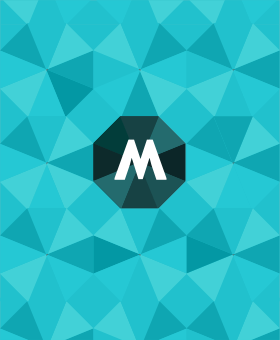
The perils of using AI as an unpaid intern
Ad agencies are loving talking about AI as an intern. But TrinityP3’s John Minty asks what are the risks that the intern might surprise or usurp its agency bosses?

When using AI as a free intern - you get what you pay for
In media and advertising there used to be a rule about being nice to the intern. You know cause one day they might be your boss but I wonder if we need to rethink or reassess this rule for an era where AI is everyone’s intern?
Every time AI gets mentioned in adland, the room exhales with the same comfort blanket: “It can’t replace human creativity.” It’s the industry’s favourite bedtime story, told under the doona while ignoring the rustling in the cupboard.
The trouble is, AI isn’t waiting politely, or switching on only when you ask. It’s already cranking out ideas before you’ve finished ordering your double-shot, extra-hot, half-strength, oat-milk skinny flat white.
There’s a fast-rising myth that “creativity is safe”. This is likely to be smashed in the same way as “people will never buy clothes online” and “digital cameras will never catch film.” Spoiler: they did, and those industries are still crying into their clearance racks.
AI isn’t just resizing banners. It’s writing copy, cutting video, sketching storyboards, spitting out campaign lines. And while everyone insists it lacks nuance, most briefs don’t need a tortured artist. They need 40 captions by tomorrow. That’s not nuance, that’s scale.
Meanwhile, agencies lumber along with swollen overheads and timelines that make clients wonder why they’re paying six figures for something a machine knocked up before lunch. Procurement’s not just hunting cheap anymore, they want AI-level speed. And the six-round approval dance? It’s the Macarena in 2025: embarrassing, outdated, and unnecessary when compared to instant output.
Here’s the uncomfortable part: AI doesn’t whinge, doesn’t ask for a stand-up desk, it doesn’t wait on a sign-off. It doesn’t demand a promotion to CEO before it’s finished onboarding. It doesn’t care about DEI and the gender pay gap, the way we humans do. Nor does it fill in timesheets, or recycled wisdom yelled at ad conferences in New York. And it sure as hell doesn’t need a Cannes Lion to validate it.
AI is not your plucky intern, it’s the relentless colleague who never sleeps, never eats and never stops learning. Write off its utility as just grunt work, and you’ll discover it just walked off with Campaign of the Year while you were still in revisions.
Why the “human spark” argument won’t cut it
Of course, creatives are right in one sense: AI still can’t capture the heartbreak of a copywriter whose ex took the dog in the breakup. But let’s be honest, most of the work agencies get paid for isn’t heartbreak. It’s volume, deadlines, and consistency. That’s where AI is already winning.
Most clients aren’t paying for tortured genius or art; they’re paying for reliability and results. If AI can get them 80% of the way there in half the time, the romantic notion of the “human spark” won’t justify a bloated invoice.
Think back. Stock photography didn’t replace photographers, but it demolished the low end of the market. Canva didn’t replace designers, but it gutted a whole tier of work that once paid a lot of bills. AI is playing the same game, only on steroids.
And that’s the point: AI will swallow the routine side of creativity, the safe, repeatable, paint-by-numbers kind. What it can’t do is the reckless, rule-breaking leap. The dangerous idea that makes clients nervous before it makes them famous. That’s the “spark” worth defending, not as a comfort blanket, but as a weapon.
The agency model under siege
The problem is structural. Agencies are built on a model where time equals money. More hours, more billings. AI makes time irrelevant. What happens when the client knows their “three-week sprint” could have been a “three-hour prompt”?
Suddenly, the inflated hierarchy, juniors, mids, seniors, creative directors, executive creative directors, and three layers of “approvers”, looks like theatre. And clients are increasingly unwilling to fund theatre when they can get the show streamed on demand.
So what’s the play?
Here’s where the industry can actually do something besides roll its eyes and mutter about nuance:
Get over the romance
Creativity isn’t a moat, AI has already paddled across it. Stop treating it like a novelty act and start treating it like a rival team that just walked in the door.
Reshape the brief
If AI can churn out assets, humans need to focus on framing the right questions. Less “make it pretty”, more “make it profitable.” Clients will pay for business impact, not just clever copy.
Hire hybrids
The future isn’t pure specialists; it’s multi-tools, people who can stitch together strategy, data, culture and craft. The old “I only do words” routine won’t cut it.
Flatten the hierarchy
Six approval rounds don’t make work better, they make it slower. AI is brutally efficient; the only way to compete is to strip out the nonsense and match its pace where it matters.
Sell the human edges
Relationships, instinct, trust, humour, empathy, clients don’t buy those from machines. Double down on the things no algorithm can fake. This is the dividing line: AI will win on routine creativity, humans have to own the dangerous, unpredictable kind.
Experiment in daylight
Don’t hide AI behind the curtain like a dirty secret. Trial it, break it, package it, then take it to clients before they take it to someone else. The agencies that do this first will own the conversation, not play catch-up.
Free the humans
Give your staff that four-day work week, and quite literally invest in the things they might do on the fifth. See just how creative they are when they’ve actually got time to live, to think, to wander. Become a part owner in a script, a book, or a new product. Machines don’t need rest. Humans need it to be dangerous.
And beyond all that? Kill the wastage. The executive layers, the endless decks, the timesheets that justify nothing. Build a new agency inside the old one and let it cannibalise the bloated structure around it. Create your own revenue streams. Become your own client. Because if you don’t, AI won’t just eat your lunch, it’ll eat your business model.
Be in the business of business, not just the business of advertising. Hustle in ways a machine can’t. Live without instructions, without prompts, without waiting to be told what to do. Build things before they’re asked for. Take risks a machine isn’t programmed to take.
That’s not a contradiction, it’s the dividing line. AI will dominate the safe, repeatable stuff. Agencies survive by owning the leaps no algorithm could predict: dangerous, culture-shifting, human creativity.
The real peril
AI hasn’t arrived asking “how can I help?” It arrived asking, “Why do you exist?” That’s a far more dangerous question, because it cuts right to the heart of the agency model. If your only answer is “because we’re creative,” then brace yourself. Creativity alone won’t cut it when a machine can give the client a decent draft before lunch.
The future of agencies won’t be gently different; it’ll be brutally efficient, unnervingly smart, and very uncomfortable for those still hiding under the doona. Agencies that evolve now will discover new relevance. Those that don’t will find themselves telling anyone who’ll listen that AI “can’t do true storytelling,” while sweating in a koala suit at Circular Quay.



